Growing Peppers in Small Spaces can feel like a daunting task, especially if you’re dreaming of a vibrant pepper harvest but are limited by a small balcony, patio, or even just a sunny windowsill. But don’t let limited square footage squash your pepper-growing dreams! For centuries, resourceful gardeners have found ingenious ways to cultivate their favorite plants, even in the most unlikely of places. Think of the hanging gardens of Babylon, a testament to human ingenuity in creating green spaces where they seemed impossible.
Today, we’re channeling that same spirit of innovation to bring you a collection of DIY tricks and hacks that will transform your small space into a pepper paradise. I know what you’re thinking: “Can I really get a decent yield from a tiny container?” The answer is a resounding YES! With the right techniques, you can enjoy a bountiful harvest of spicy jalapeños, sweet bell peppers, or fiery habaneros, all from the comfort of your own home.
This article is your ultimate guide to growing peppers in small spaces. We’ll explore everything from choosing the right pepper varieties and containers to optimizing sunlight and watering techniques. Forget expensive gardening equipment; we’re all about simple, affordable solutions that anyone can implement. So, grab your gardening gloves, and let’s unlock the secrets to a thriving pepper garden, no matter how small your space may be!
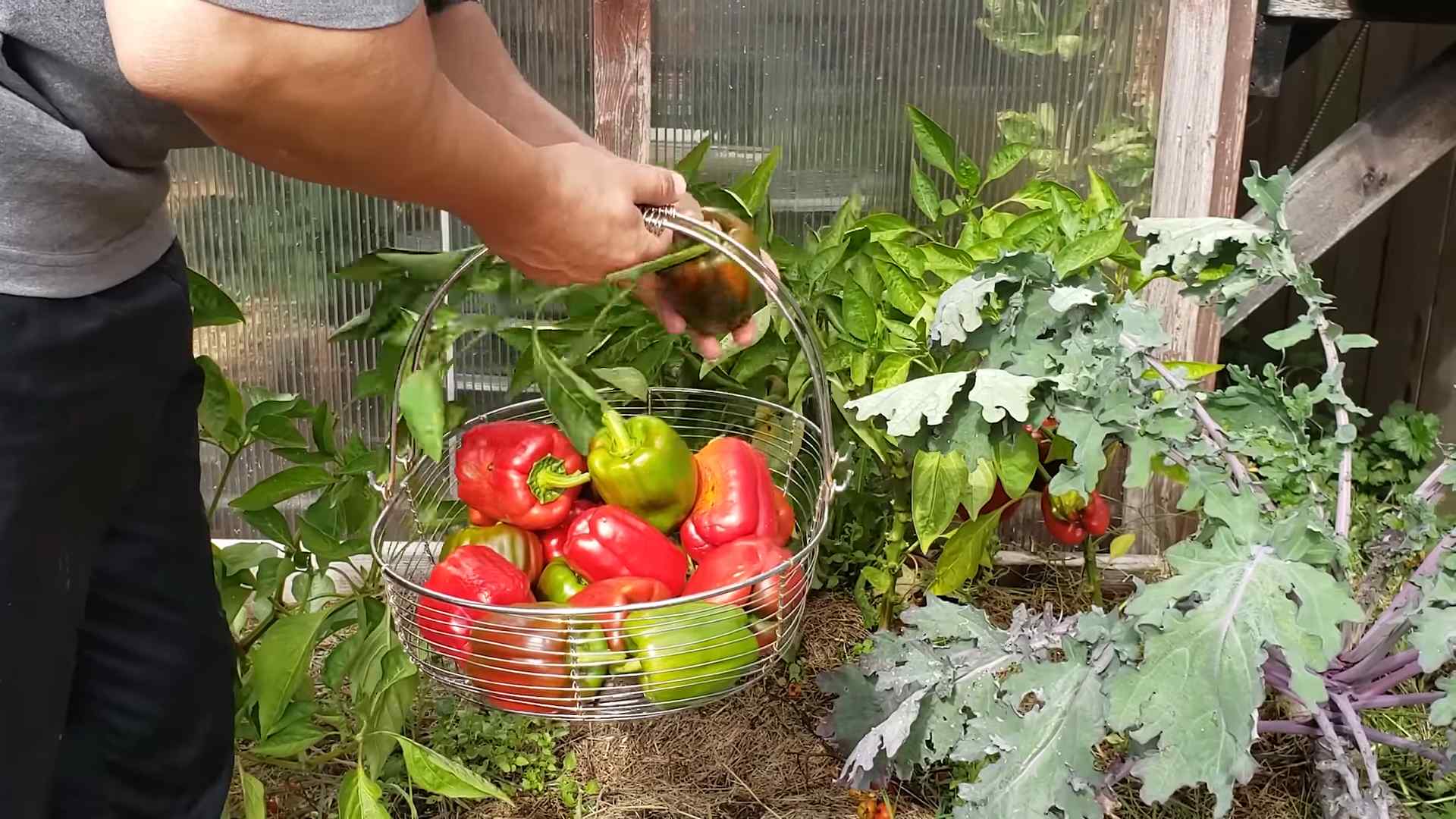
Growing Peppers Like a Pro, Even in Tiny Spaces!
Hey there, fellow gardening enthusiasts! So, you’re dreaming of fresh, spicy peppers straight from your garden, but you’re short on space? Don’t worry, I’ve got you covered! I’ve been growing peppers in containers for years, and I’m here to share all my secrets to help you achieve a bountiful harvest, even if you only have a balcony, patio, or even a sunny windowsill. Let’s dive in!
Choosing the Right Peppers and Containers
First things first, not all peppers are created equal when it comes to container gardening. Some varieties are naturally more compact and well-suited for smaller spaces. Here’s what I recommend:
* Compact Varieties: Look for peppers labeled as “dwarf,” “bush,” or “compact.” These are bred to stay smaller and produce well in containers. Some of my favorites include:
* Sweet Peppers: ‘Mini Bell’, ‘Lunchbox’, ‘Patio Baby’
* Hot Peppers: ‘Thai Hot’, ‘Jalapeño M’, ‘Serrano Tampiqueño’
* Container Size: This is crucial! The size of your container directly impacts the pepper plant’s growth and yield.
* Minimum Size: I recommend at least a 5-gallon container for most pepper varieties.
* Ideal Size: A 7-10 gallon container will give your peppers plenty of room to spread their roots and produce a larger harvest.
* Container Material: You have options!
* Plastic: Lightweight and affordable, but can heat up quickly in direct sun. Choose darker colors carefully.
* Terracotta: Porous and allows for good drainage, but can dry out faster.
* Fabric Pots: Excellent drainage and aeration, which promotes healthy root growth. These are my personal favorite!
* Drainage: Absolutely essential! Make sure your container has drainage holes to prevent waterlogging, which can lead to root rot.
Getting Started: Planting Your Peppers
Now that you’ve chosen your peppers and containers, it’s time to get planting! You can start from seeds or purchase starter plants from a local nursery. I usually buy starter plants to save time, but starting from seed is definitely rewarding!
Starting from Seed (Optional)
If you’re feeling ambitious, here’s a quick rundown on starting peppers from seed:
1. Start Early: Peppers need a long growing season, so start your seeds indoors 6-8 weeks before the last expected frost.
2. Seed Starting Mix: Use a seed starting mix, not regular potting soil. It’s lighter and provides better drainage.
3. Warmth is Key: Peppers need warmth to germinate. Use a heat mat or place your seed trays in a warm spot.
4. Light: Once the seedlings emerge, provide them with plenty of light. A grow light is ideal, but a sunny windowsill can work too.
5. Transplant Carefully: Once the seedlings have a few sets of true leaves, transplant them into larger pots.
Planting Starter Plants
This is the easier and faster route!
1. Choose Healthy Plants: Look for plants with healthy green leaves and a sturdy stem. Avoid plants that are yellowing, wilting, or have signs of pests or diseases.
2. Prepare Your Container: Fill your container with a high-quality potting mix. I recommend a mix specifically formulated for vegetables or a general-purpose mix amended with compost.
3. Dig a Hole: Dig a hole in the center of the container that’s slightly larger than the root ball of the pepper plant.
4. Gently Remove the Plant: Gently remove the pepper plant from its nursery pot. If the roots are pot-bound (tightly circling the root ball), gently loosen them with your fingers.
5. Plant the Pepper: Place the pepper plant in the hole and backfill with potting mix. Make sure the top of the root ball is level with the soil surface.
6. Water Thoroughly: Water the pepper plant thoroughly after planting.
Sunlight, Watering, and Feeding: The Pepper Plant’s Needs
Peppers are sun-loving plants, so they need plenty of sunlight to thrive. They also need consistent watering and regular feeding to produce a good harvest.
* Sunlight: Peppers need at least 6-8 hours of direct sunlight per day. If you don’t have enough sunlight, consider using a grow light.
* Watering: Water your pepper plants deeply whenever the top inch of soil feels dry to the touch. Avoid overwatering, which can lead to root rot. During hot weather, you may need to water daily.
* Feeding: Peppers are heavy feeders, so they need regular fertilization.
* Start with a Balanced Fertilizer: When you first plant your peppers, use a balanced fertilizer (e.g., 10-10-10) to promote overall growth.
* Switch to a Bloom Booster: Once the peppers start to flower, switch to a fertilizer that’s higher in phosphorus (the middle number) to encourage fruit production. I like using a tomato fertilizer for my peppers.
* Frequency: Fertilize your peppers every 2-3 weeks, following the instructions on the fertilizer label.
* Mulching: Add a layer of mulch around the base of the pepper plants to help retain moisture, suppress weeds, and regulate soil temperature. I use straw or wood chips.
Supporting Your Pepper Plants
As your pepper plants grow and produce fruit, they may need some support to prevent them from toppling over.
* Staking: Use stakes to support the main stem of the pepper plant. Insert the stake into the soil near the plant and tie the stem to the stake with soft twine.
* Caging: Use a tomato cage to provide overall support for the pepper plant. Place the cage over the plant when it’s young.
Pest and Disease Control
Like all plants, peppers can be susceptible to pests and diseases. Here’s how to keep your plants healthy:
* Inspect Regularly: Check your pepper plants regularly for signs of pests or diseases.
* Common Pests: Aphids, spider mites, and whiteflies are common pests that can attack pepper plants.
* Control: Use insecticidal soap or neem oil to control these pests.
* Common Diseases: Blossom end rot and fungal diseases are common problems that can affect pepper plants.
* Blossom End Rot: This is caused by a calcium deficiency. Add calcium to the soil or use a calcium spray.
* Fungal Diseases: Improve air circulation around the plants and avoid overwatering. Use a fungicide if necessary.
Harvesting Your Peppers
The most rewarding part! Knowing when to harvest your peppers is key to getting the best flavor and texture.
* Sweet Peppers: Harvest sweet peppers when they’ve reached their mature color (usually red, yellow, or orange) and are firm to the touch.
* Hot Peppers: Harvest hot peppers when they’ve reached their mature color and are slightly soft to the touch. The longer you leave them on the plant, the hotter they will become.
* Use Pruning Shears: Use pruning shears or scissors to cut the peppers from the plant. This will prevent you from damaging the plant.
Extra Tips for Success
Here are a few extra tips that I’ve learned over the years:
* Pinch Off Early Flowers: Pinch off the first few flowers that appear on the pepper plant. This will encourage the plant to focus on vegetative growth and produce more fruit later on.
* Rotate Your Crops: If you’re growing peppers in the same containers year after year, rotate your crops to prevent soilborne diseases.
* Companion Planting: Plant basil, marigolds, or nasturtiums near your peppers to deter pests.
* Water in the Morning: Water your pepper plants in the morning so that the foliage has time to dry before nightfall. This will help prevent fungal diseases.
* Don’t Be Afraid to Experiment: Gardening is all about experimentation! Try different varieties of peppers, different containers, and different fertilizers to see what works best for you.
Growing peppers in small spaces is totally achievable with a little planning and care. I hope these tips help you grow a bumper crop of delicious peppers! Happy gardening!
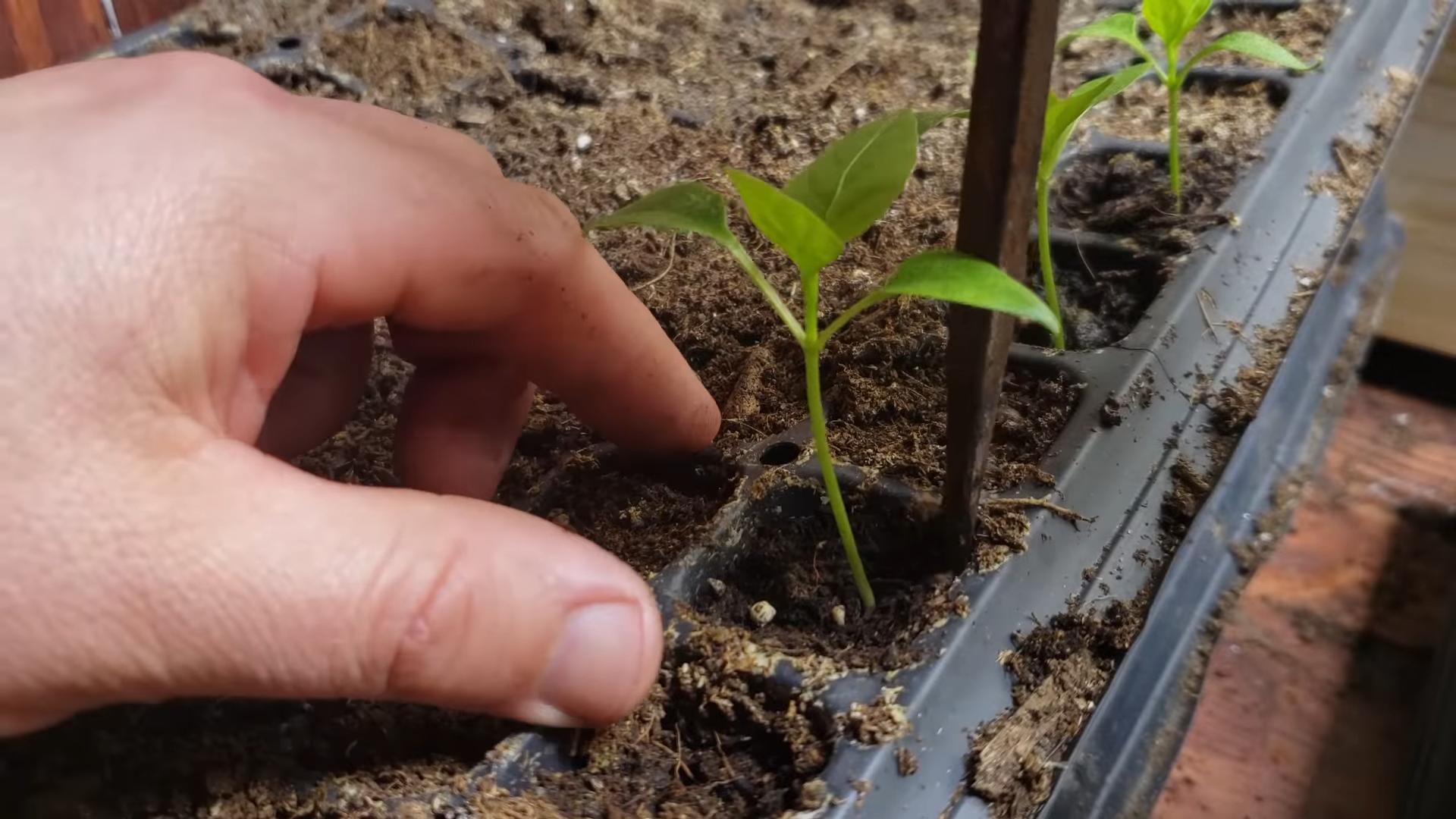
Conclusion
So, there you have it! Growing peppers in small spaces isn’t just a possibility; it’s a rewarding and surprisingly simple endeavor. We’ve explored the key elements, from selecting the right pepper varieties and containers to mastering the art of watering and feeding. The beauty of this DIY project lies in its adaptability. Whether you’re working with a tiny balcony, a sunny windowsill, or a compact patio, you can absolutely cultivate a thriving pepper garden.
Why is this a must-try? Because fresh, homegrown peppers are simply incomparable to anything you can find in a grocery store. The flavor is brighter, the texture is crisper, and the satisfaction of harvesting something you’ve nurtured from seed (or seedling) is unparalleled. Plus, you have complete control over the growing process, ensuring your peppers are free from unwanted chemicals and pesticides.
But the journey doesn’t end here! Feel free to experiment with different pepper varieties. Perhaps you’re a fan of the fiery heat of habaneros, or maybe you prefer the sweet crunch of bell peppers. Don’t be afraid to mix and match, creating a vibrant and diverse pepper patch. Consider companion planting as well. Basil, for example, is known to deter pests and improve the flavor of peppers. Marigolds are another excellent choice, adding a splash of color while also repelling nematodes.
Another variation to consider is hydroponic pepper growing. While it requires a bit more initial investment and setup, hydroponics can significantly increase yields and reduce the risk of soilborne diseases. If you’re looking for a more advanced challenge, this could be a fantastic option.
And speaking of challenges, remember that growing peppers, like any gardening endeavor, requires patience and observation. Keep a close eye on your plants, checking for signs of pests or diseases. Adjust your watering and feeding schedule as needed, and don’t be discouraged by occasional setbacks. Every gardener experiences them, and they’re all part of the learning process.
Ultimately, the goal is to enjoy the process and reap the delicious rewards of your labor. We strongly encourage you to give this DIY trick a try. Start small, learn as you go, and most importantly, have fun!
Once you’ve harvested your first batch of homegrown peppers, we’d love to hear about your experience. Share your photos, tips, and stories in the comments below. Let’s create a community of small-space pepper growers, inspiring and supporting each other along the way. What are you waiting for? Get those seeds started and embark on your pepper-growing adventure today! Remember, the key to success is consistent care and attention to detail. With a little effort, you’ll be enjoying fresh, flavorful peppers in no time. This method of growing peppers in small spaces is a game changer for urban gardeners.
FAQ
What are the best pepper varieties to grow in small spaces?
Choosing the right pepper variety is crucial for success in small-space gardening. Compact or dwarf varieties are generally the best option, as they don’t require as much space to grow and produce a good yield. Some excellent choices include:
* **’Patio Fire’ Peppers:** These are specifically bred for container gardening and produce a good amount of medium-hot peppers.
* **’Mini Bell’ Peppers:** These are smaller versions of bell peppers, perfect for snacking and stuffing. They come in various colors, adding visual appeal to your garden.
* **’Thai Hot’ Peppers:** These are small, prolific peppers that pack a significant punch of heat. They’re ideal for adding spice to your dishes.
* **’Sweet Palermo’ Peppers:** While slightly larger than some other options, these sweet peppers are relatively compact and produce a high yield.
* **’Jalapeño M’:** A compact jalapeño variety that is perfect for small spaces.
Consider your taste preferences and the amount of space you have available when making your selection.
What size container is needed for growing peppers?
The ideal container size depends on the pepper variety you’re growing. As a general rule, a container that is at least 5 gallons in size is recommended for most pepper plants. Larger varieties, such as bell peppers, may benefit from a 7-10 gallon container. Ensure the container has adequate drainage holes to prevent waterlogging, which can lead to root rot. Fabric pots are also a great option as they allow for better aeration and drainage.
How often should I water my pepper plants in containers?
Watering frequency depends on several factors, including the weather, the size of the container, and the type of potting mix you’re using. Generally, you should water your pepper plants when the top inch of soil feels dry to the touch. During hot, dry weather, you may need to water daily. Avoid overwatering, as this can lead to root rot. A good way to check if your plants need water is to lift the container. If it feels light, it’s likely time to water.
What type of fertilizer should I use for pepper plants?
Pepper plants are heavy feeders and require regular fertilization to thrive. Use a balanced fertilizer with an NPK ratio of 5-10-10 or 10-10-10. Apply fertilizer every 2-3 weeks during the growing season, following the instructions on the fertilizer package. You can also supplement with organic fertilizers, such as compost tea or fish emulsion. Avoid using fertilizers that are too high in nitrogen, as this can promote excessive foliage growth at the expense of fruit production.
How much sunlight do pepper plants need?
Pepper plants need at least 6-8 hours of direct sunlight per day to produce a good yield. Choose a location that receives plenty of sunlight throughout the day. If you’re growing peppers indoors, you may need to supplement with grow lights. Rotate your plants regularly to ensure they receive even light exposure on all sides.
How do I prevent pests and diseases on my pepper plants?
Regularly inspect your pepper plants for signs of pests or diseases. Common pests include aphids, spider mites, and whiteflies. You can control these pests with insecticidal soap or neem oil. Diseases such as blossom end rot and fungal infections can be prevented by providing proper watering, fertilization, and air circulation. Avoid overhead watering, as this can promote fungal growth. If you notice any signs of disease, remove the affected leaves or plants immediately.
What is blossom end rot, and how do I prevent it?
Blossom end rot is a common problem in pepper plants, characterized by a dark, leathery spot on the bottom of the fruit. It’s caused by a calcium deficiency, which is often due to inconsistent watering. To prevent blossom end rot, ensure your pepper plants receive consistent watering and avoid letting the soil dry out completely. You can also add calcium to the soil by incorporating bone meal or crushed eggshells.
When should I harvest my peppers?
The harvesting time depends on the pepper variety and your personal preference. Bell peppers are typically harvested when they are fully colored and firm to the touch. Hot peppers can be harvested when they are green or red, depending on the variety. Use pruning shears or scissors to cut the peppers from the plant, leaving a small stem attached.
Can I grow peppers indoors year-round?
Yes, you can grow peppers indoors year-round with the help of grow lights. Choose a sunny location or supplement with artificial lighting to provide your plants with the necessary light. Maintain a consistent temperature and humidity level, and water and fertilize your plants regularly.
What are some companion plants for peppers?
Companion planting can help improve the health and yield of your pepper plants. Some excellent companion plants for peppers include:
* **Basil:** Repels pests and improves the flavor of peppers.
* **Marigolds:** Repel nematodes and other soil pests.
* **Onions and Garlic:** Deter aphids and other pests.
* **Carrots:** Improve soil drainage and aeration.
* **Tomatoes:** While they are in the same family, they can benefit from each other when planted together, but ensure adequate spacing.
Avoid planting peppers near fennel or brassicas (such as cabbage and broccoli), as they can inhibit pepper growth.

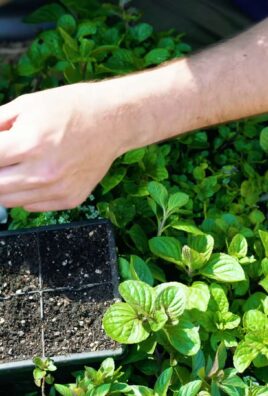
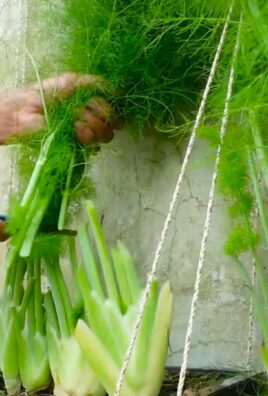
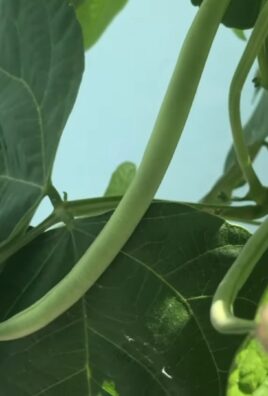
Leave a Comment